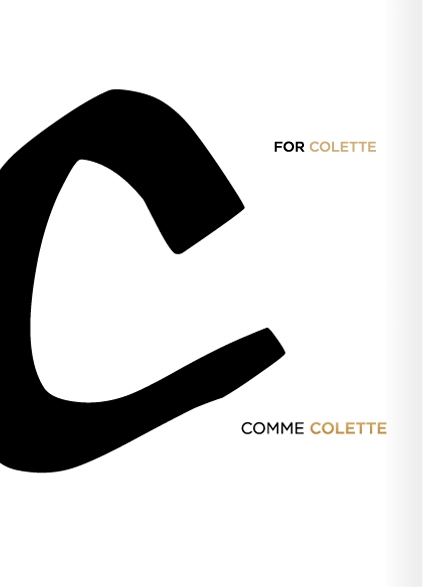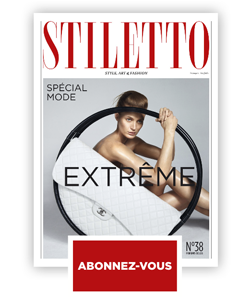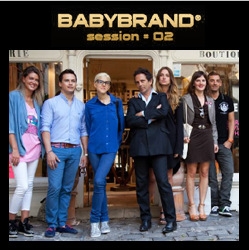
Both on the ground and in the air, the distribution world is divided into multi and mono-brand shops, in real life and on the Internet. The multi-brands distribution model was the most popular one until the end of the 70's, when the brand strategy and visual identity were not yet a requirement, when merchandisers still were stall keepers and when advertisement was still called “réclame”, the deliciously outdated French word for publicity. When shops were not Concept Stores yet.
The first shops of this kind emerged in 1957, settled by Marcel Bleustein-Blanchet, founder of the Publicis Group, on the Champs Elysées and in Saint-Germain, based on a model imported from the U.S.A which will retain its name: drugstore. At that time, they were shops where you could find everything to dress, eat, or entertain yourself, take care of your health, or destroy it in the trendiest way. Including the purring of Jacques Dutronc's kitties.
It will take until the 80's to see the concept stores settle permanently in the distribution sector and set a precedent around the world. Theirs founders are endearing and strong personalities whose personal histories merge with the one of their shops.
L’Eclaireur. Just as the Parsons School and the Royal Academy of Antwerp exist, there also is a fashion school in Morocco which adress is unknown but to an unknown adress, but which witnessed the birth of great names of this industry :
Joseph (Ettedgui), who will open in London the first renowned fashion concept store, Ralph Toledano who will preside the Karl Lagerfeld house before getting back on the track the Guy Laroche and Chloé houses, as well as the Jean-Paul Gaultier house, his namesake Sydney Toledano, maker of the Dior house success, Babeth Dijan founder of the Jill and Numéro magazine, Robert Bensoussan, who after cutting his teeth at LVMH made the success of the shoemaker Jimmy Choo and Armand Hadida, who thirty years ago founded L'Eclaireur, the first Parisian concept store dedicated to fashion and design. With his reserved and demanding temper, just like all people in love are, this determined man will run alone and for five years a gas station in the suburbs of Paris, opened 24/7. This was the price to pay for the hardworker to realize his dream and open in 1981 a 30 square meters shop in the basement of a shopping mall located on the Champs-Elysées. The shop was dedicated to promoting the collections of Marithé & François Girbaud, the couple of creators who revolutionnized jeans in the 80's: they owe him a lot for the success of their brand. L'Eclaireur will then introduce its public to the Belgian and Japanese schools of thought, and to the today and tomorrow's Italian brands and creators. This outstanding buyer selects collections, often as soon as they are created, and accompanies them for several years by assigning to them a growing space in its shops, which are frequented by confirmed fashionistas and by other professional buyers from all around the world, who come to Paris during fashion weeks.
This extensive work with selected brands brings them more
visibility and a credibility that is absolutely necessary for their development. Armand and Martine Hadida are now heads of a small Parisian empire composed of seven shops and luxury propositions, with an impressive staging, each one having his own print. Armand is also the owner and artistic director of the professional tradeshow, Tranoï. Martine and Armand Hadida are one of the most influent couples on planet fashion.
Maria Luisa Poumaillou, a radiating, socialite, bustling Venezuelian woman opens her first store Maria Luisa on the rue Cambon in 1988, just like Coco Chanel did in her time. She will also introduce the fashionistas to the discrete charm of the lovely rue du Mont-Thabor, parallel to its razzle-dazzle neighbour, the rue du Faubourg Saint-Honoré. This great traveler was the first one to dedicate herself to new Belgian and English stylists. She opened the first Parisian shop of her friend Mahnolo Blahnik, the socialite shoemaker who privileges a handmade and sexy know-how: he's the model of Christian Louboutin and Pierre. In 2010, his analysis about the distribution of fashion led Maria Luisa to close her stores and work with the big names of distribution: les 3 Suisses who she will be digging out new talents for, and Le Printemps, from the PPR Group where she is appointed fashion editor and with who she has been sharing with her notoriety and her experience as a buyer on a dedicated space. Maria Luisa is also owner and artistic director of her eponymous brand.
Colette is the most secretive member of this trio which is indispensable to Parisian fashion. Mentioning her name, or her
daughter's, Sarah, is enough to understand that it's all about the temple of fashion. As soon as its opening, the Colette store has caused quite a sensation and has been giving to Paris the jubilatory unique energy that the capital had lost for ten years, since October 1987 and the Black Monday crash. Famous for its water bar, the 700 square meters three-stories Concept Store, inaugurated in March 1997 at the 213 rue Saint-Honoré has layed the foundations for the merchandising of all minimalist stores, whether mono or multi-brands which will later emerge.

If L'Eclaireur is comparable to a book, Colette is more similar to a magazine and renews its front-windows every week. The staging of Sarah's choice, whether about ultrasharp fashion, high technology, design, books, cosmetics, CDs and DVDs, creates a real editorial line backed up by the store's online shop which instantly sets the tone for the buyings of concept stores all around the world.
Extremely reserved, the mother and daughter generate the longing for products by managing the scarcity of the products they offer: when the shop runs out of a product, it's over. The Colette shopping bag, white-colored with its blue double dot, is
welcomed with the same enthusiasm as the orange Hermès box or Tiffany's blue cyan are, even before being unwrapped :
the graffer André Saraiva, cofounder of Le Baron with Lionel Bensemoun, driving forces of the Paris, Calvi, New York, Miami or Tokyo hypest nights, Olivier Zahm, also called OZ by ladies and his friends, a symbol of the trendy 2.0 era, founder and artistic director of the magazine Purple and of his blog Purple Diary, an absolute must for sleepless fashion nights and Jennifer Eymere, high priestess of the Jalouse magazine.
Joyce in Hong-Kong, Maxfield and H. Lorenzo in Los Angeles, Corso Como and Biffi in Milan, Barneys in New York, 3rd culture in Tokyo, Joseph, Brown's and Harrod's in London... every world capital must have its concept store and its museum. Not owned by any Luxury Group, these men and women, independent by essence are at the same time the eyes, the nose, the ear and the mouth of fashion to which they give meaning. These temples of fashion are an absolute need for the PR strategy of brands, whether newly emerged or not.
The must for a brand, whether it is small or big is to succeed in a collaboration, most of the time through a limited edition, that would be distributed in one of these concept stores. It would allow the brand to gain an important echo in the international press and appear in the cloakroom of clients who are inevitably prescribers of these stores. For if the buzz is in the press and on the net, it is first and foremost sold at L'Eclaireur, Maria Luisa
and Colette.


